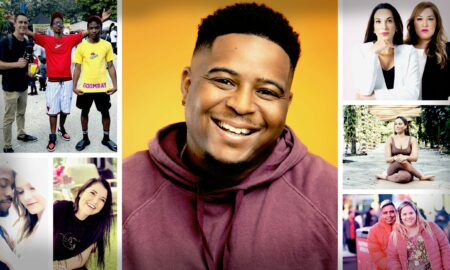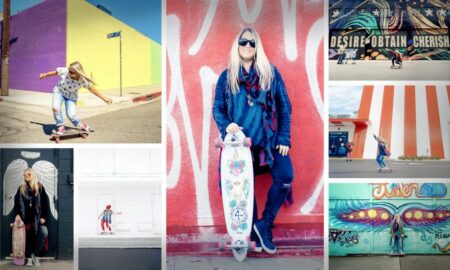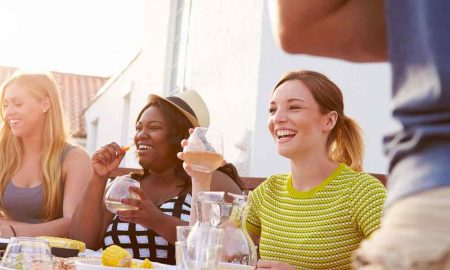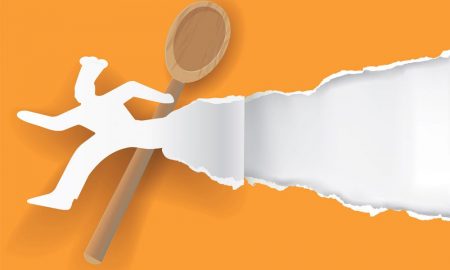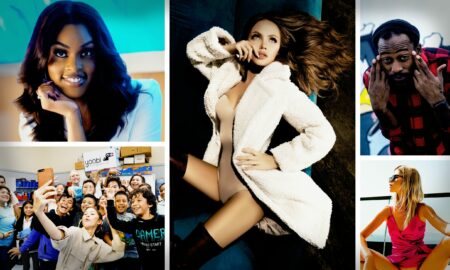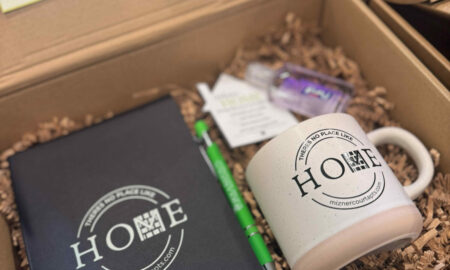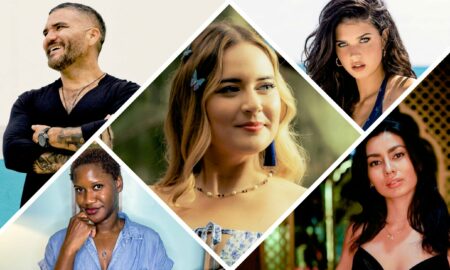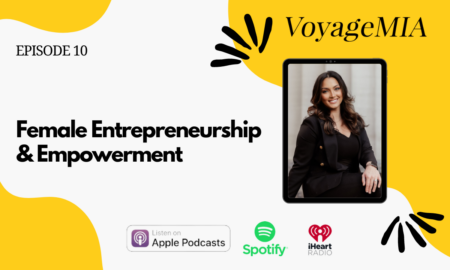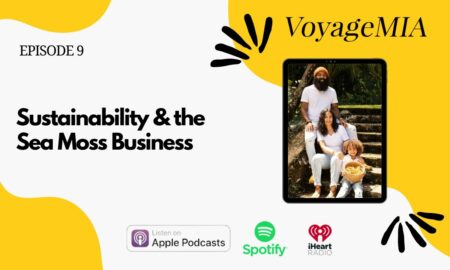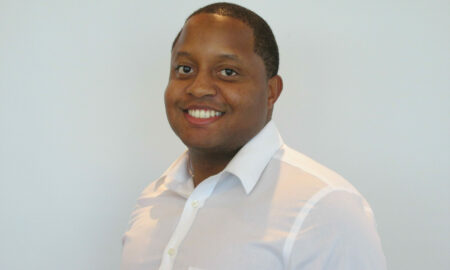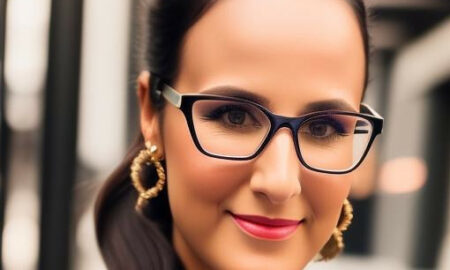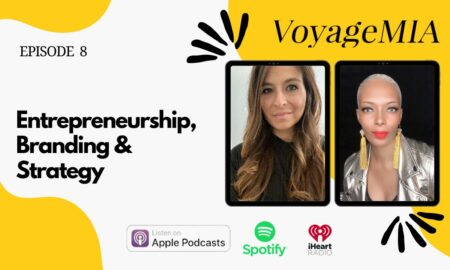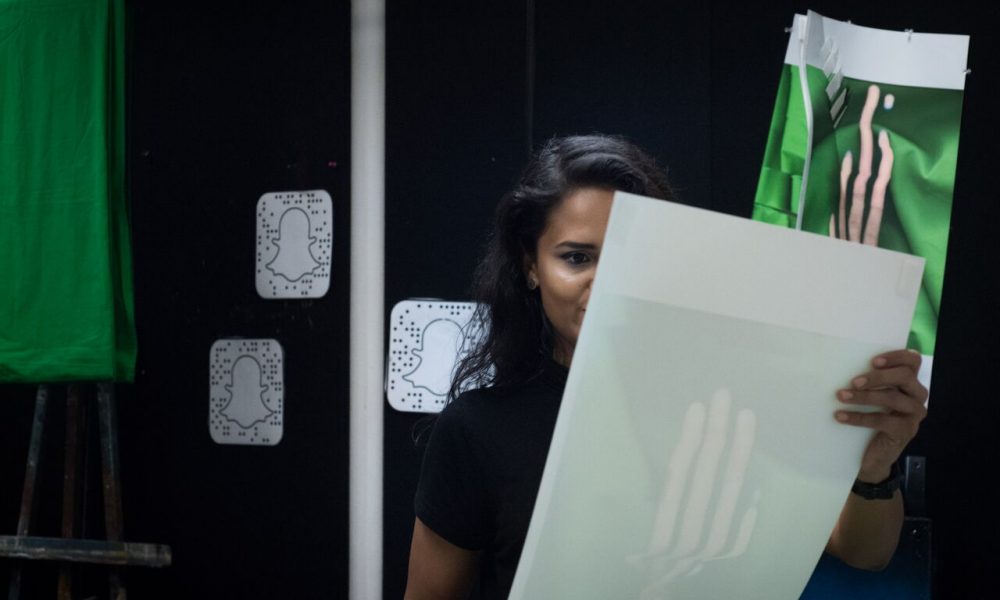

Today we’d like to introduce you to Catherine Gomez.
Catherine, can you briefly walk us through your story – how you started and how you got to where you are today.
I was fearfully and wonderfully made, born to a thief and a single teen mama who was a first-generation American. My odds weren’t great and my brown skin and learning disability didn’t help. My mom is incredibly brave and no mountain could shake her will to not only survive but thrive. She’s built an empire, and my inheritance has been an arsenal of skills on how to build my own.
My mother assured me when I graduated high school that college was just one of many paths I could take. I wasn’t pressured to pursue a degree, but education was extremely important to me. All the women in my family are very intelligent, and I get my love of research from my mom. Even though the university system was difficult for me to be successful in, I kept moving forward. I didn’t understand how all the scholarships worked, how the club system functioned, or how to build a network with Deans and professors. It was a large undertaking. I had so much failure, I started calling it ‘falling forward’. I knew the failure would come, like barrels when you’re playing Donkey Kong. The impact will come, but when it does I.will. ‘fall forward’ and the impact will STILL be used for good, for progress, and for growth. I had a toxic boyfriend, lost scholarships and grants, dropped out of school, and had a loan. It was a rough recovery, took about three or so years to get back to school.
I worked for the Museum of Fine Arts, the Dali Museum, the Chihuly Collection, the SHINE Mural festival, Palehorse Design, and more. I helped build a battered women’s shelter in Honduras, I studied abroad in Santiago, Chile, learned what research in the Arts looks like, hiked in Patagonia and snorkeled in Easter Island.
Finally, I graduated with a Bachelor of Fine Arts and a minor in Women and Gender Studies. God changed my life with those degrees, and I’ve changed the lives of my family with them. I brought home pdf after pdf explaining our immigrant experiences and the various liminal spaces we exist in. Research, experimentation, and questions radiate from me. Every fiber of my being is constantly testing, pondering, and interpreting. Since my work is an extension of myself, my studio then functions more like a laboratory.
Today, my work is in constant flux, I would currently describe it as cybernetic photography. My goal is to translate these images and designs into murals. Landmarks dedicated to people of color and their existence. 2D public artworks that are functional, virtual interdisciplinary portals, fostering community by physically facilitating people to congregate around them. These portals whether through creative coding, AI, or AR, will augment the realities of race and poverty,
If I could travel back in time and give a young me only one thing, it would be research. I would give that tiny inquisitive brown girl the tools and space to explore, question, understand, learn, and evolve. And that’s what research did for me. Like a chroma key magician, I want to wave my green screen cape and make an entire university library appear in the hood, and I want to pull a quantum physics bunny out of my QR top hat.
That’s how I got to where I am today, in a lab, trying to flatten the entire world with light, to then gift it to the next generation of color. I hope in doing so I’ll change the world, even if that world is only the inner world of one tiny inquisitive Latina.
We’re always bombarded by how great it is to pursue your passion, etc. – but we’ve spoken with enough people to know that it’s not always easy. Overall, would you say things have been easy for you?
The obstacle that set me back the most was being a young woman who didn’t have a full understanding of what her environment or institution had to offer. That ignorance put my starting line farther back than my peers. New environments are always hard, and it’s especially taxing when you’re constantly doing new things. My pro-tips and tools that bring success to any new environment are as follows:
First, pray and pray specifically. I schedule 10 minutes a day for Quiet Time, that includes a varying mix of silence, meditation, prayer, reading, and writing. The tools that got me to this morning practice are a Blinkist review of Miracle Morning by Hal Elrod, a yearly prayer journal to document progress and growth by Val Marie Paper (it’s like $47 but they have cheaper options that run from $8 – $20), and I burn Palo Santo to set the mood. Bonus tip: pack a small cosmetic baggie in your purse specifically for emergency on-the-go Quiet Time. Mine includes this matchbook that works as tiny incense it’s by Match Incense in Oriental Blossom ($10 for 4 on Amazon).
Second, get connected, search for communities or networks that will help you and your mission grow. Like one of my favorite comedians, Alli Wong says “It’s the Walking Dead out there, you gotta link up to survive!” I follow this rule physically, virtually, spiritually, and especially when traveling.
In a physical sense, I make sure that my posture is communicating that I’m open to new people by opening my shoulders and keeping my chin up. Even as an outgoing loud spaz, like a small brown female it’s easy to minimize myself and take up less space when I’m in a new setting. To combat this tendency brought on my nerves, I first rename the social anxiety ‘excitement’, that way when it’s vocalized I amp myself up and get in ‘fight mode’ vs saying out loud “I’m so nervous” because that would cue my brain into ‘flight mode’. I also try to dress in interesting ways to give people an easy conversation starter. For example, I have a large earring collection and I’m drawn to asymmetrical compositions, so I wear cool mismatching earrings. It’s the equivalent of a coffee table book on my head.
Virtually, I follow this principle by following hashtags on Instagram and set google alerts to create online databases of who’s out there working towards similar goals. Work goes so much faster in teams and when you’re studio practice is as experimental as mine, you don’t always have a community to brainstorm, discuss, critique, and give you feedback in person. So, virtual communities in niche fields help me nurture my work when warm bodies are sparse.
This principle is most critical when I travel because loneliness can crush you and your work. If you find that social anxiety is creeping up on you, visualize it as a river, not a wild rapid but just a calm beautiful body of water providing nutrients to all its surroundings. The social anxiety river serves it’s purpose don’t fixate on it, instead focus your energy on getting across to that community on the other side. Like stepping stones, find people or activities to help get you to the other side. I remotely create networks before I go somewhere using the virtual techniques above and follow people that those online friends tag. It’s like making a friend through a friend but online. A network I’ve used and had life-changing success with is Couchsurfing, like Meetup you can use it to simply attend an event with people in the same situation. These online communities are SUPER generous with their time, resources, energy, and knowledge. If you’re nervous to go alone, DM someone that has RSVPd and ask to attend or will carpool with them. Send out several messages like fishing lines to increase your chances of a bite!
Bonus tip: Put your phone away while networking or at parties. Events are kind of like being in a classroom. making eye contact with people increases your chances of being called on. If you feel idle without tech in hand, try to substitute it with a Permaculture practice called Sit-N-Spot (Google Sit Spots Wilderness Awareness School) it’s a systematic form of people watching. That way when someone approaches you, you have observations to divulge.
Third, mentorship, mentorship, mentorship!!! It will change your life. I didn’t really know what that was until artist Palehorse asked to mentor me. Ever since I’ve made sure to look for a mentor everywhere I go. As children, we grow rapidly by mimicking what’s around us, that’s a small form of mentorship. Look for someone in your major, department, industry, online, or even in a room you’ve entered and apply their best practices to help you grow. To take note mental note of when I spot things I’d like to adopt, I verbalize them as compliments. For example, I’ll say “Wow I like how you do that…” that phrase helps me break the ice in a group, introduce myself to a stranger, and it helps me remember them after the event has passed if we exchange any contact info. On a deeper level, a mentor can lead you to great opportunities like grants, fellowships, or residencies. Think of them as guides at a National Park, they know where the caves and waterfalls are. Bonus tip: Friends are like pets, after a while you start to look like them. So, surround yourself with people who have characteristics and habits you’d like to develop. If you aren’t looking to evolve into a smoker don’t surround yourself with them. Your statistical chances of growth go up by surrounding yourself with people who are growing, or going where you’d like to go.
We’d love to hear more about your work.
I make interactive works that facilitate conversations around subjects concerning race, gender, and identity. My practice is focused on encouraging communities to host these conversations. By conducting transdisciplinary research about systems I hope to better understand the community and the relationships needed to form them.
My work is created, and solely exists, to foster deep human interaction.
The work is meant to facilitate conversations through aesthetics, encourage community through function, and encourage transformation through execution.
I seek transformation in the many liminal spaces that exist and overlap between race, gender, and identity.
While I’ve been trained by community organizations like The Dali Museum, The Museum of Fine Arts, the SHINE Mural Festival, and the Tampa Bay Latin Film Festival, I hope to become a community expert through field school training and higher education.
Beyond anything else, what really sets me apart, is my faith in God. Faith is a risk, a challenge, and a discipline, in all these ways it molds my artistic practice.
Do you recommend any apps, books or podcasts that have been helpful to you?
The resources that I recommend are The Passion Planner, The Artist Way by Julia Cameron, The Tim Ferriss podcast, and e-flux journals. But what really helps me live my best life is reading about subjects on the other side of my industry spectrum.
I try to find entry-level PDFs to learn about wildly different subjects like cybernetics, quantum physics, or mythology for example. I then challenge myself to learn that new concept, interpret it, and find a similarity between it and a concept I’m familiar with from a different field.
It’s an exercise in understanding the unfamiliar.
Contact Info:
- Instagram: https://www.instagram.com/xat.gomez/





Getting in touch: VoyageMIA is built on recommendations from the community; it’s how we uncover hidden gems, so if you know someone who deserves recognition please let us know here.

